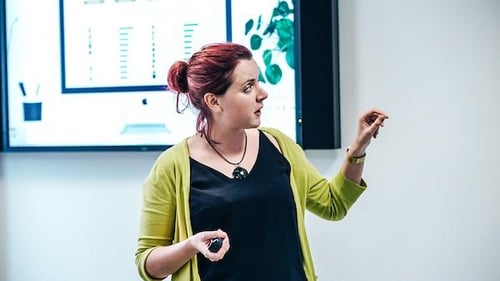4 min read
Communicating to our employees is never easy, and it gets even more difficult as we face a variety of challenges which are outside of our control. These challenges have grown over the years, and we all need to find ways to address and overcome them so we can effectively communicate our messages.
Here are three challenges I’ve faced over the years, and some tips on how to overcome them:
1. Global workforces
More employees are migrating or being hired across country borders, creating more global workforces. As written in the EIU report titled Engaging and Integrating a Global Workforce, “Country borders are metamorphosing from barriers to bridges. Goods, services and labour talent are now flowing more freely across the globe than ever before.”
So what does this mean for HR and specifically to employee communications? It creates the challenge of handling the complexities of communicating to a workforce made up of different languages, cultures, values and even expectations.
Learn more about powerful employee communications tools to overcome employee engagement challenges »
A few employee communications tips to keep in mind ...
Understand both similarities and differences among employees.
You’ll find that in some ways your global workforce will be similar, but in many ways they may be different. The key here is to take the time, and add to your process a step(s) to understand them before deciding how you will manage your communications. You’ll most certainly find that some of the differences will impact decisions such as how much information to communicate, how often, and which words and vehicles to use.
Think about your words.
It’s always challenging selecting the ‘right’ words when communicating, but even more so when communicating to a global workforce. Here’s an example which happened to Catrin Lewis, our Internal Communications Manager at Reward Gateway recently. She sent out a global message asking employees to volunteer to be anchors for our in-house televised global update show. She was surprised when no one from our office in Bulgaria volunteered, and soon found out that they had no idea what an anchor was, thinking it had something to do with a boat. Oops!
2. Diverse workforces
We’ve all read the reports saying that soon we’ll have five generations working together in the workplace. Many say not to dwell on the differences, which I completely agree with, except when it comes to communications! The reason for this is that often communication preferences and expectations are based on what you’ve experienced, which differs greatly from generation to generation. What else should you keep in mind?
As mentioned with the first challenge, the starting point here is to understand the preferences and expectations of your employees. How does each generation prefer to be communicated to, what are their expectations? Do they prefer talking face-to-face, email, texting, etc.? Start by having a full and accurate picture to use when designing your communications plan.
Use multiple communication approaches
As Dana Brownlee wrote in the Forbes article titled 10 Tips for Communicating Across Generations, “Too much reliance on one communication approach can alienate someone with a different approach.” It’s important to create a balance between the needs of each group, which can only be done by using a multitude of approaches and media.

3. Information overload
So far I’ve talked about the differences between our workforce, but this challenge is one which we all face, and that is information overload. Daniel Levitin, McGill University psychology professor and author of ‘The Organized Mind: Thinking Straight in the Age of Information Overload’ explained this concept well. He said that “In 1976, there were 9,000 products in the average grocery store, and now it’s ballooned to 40,000 products. And yet most of us can get almost all our shopping done in just 150 items, so you’re having to ignore tens of thousands of times every time you go shopping.” That’s exactly what we need to do with information being communicated to us each day, hour and minute.
To end let me share an inspirational quote on overcoming obstacles by Ray A. Davis, a famous American writer and speaker. I’ve done this so we all can enter into ‘battle’ with these communication challenges with the mindset that we can and will overcome them.
A challenge only becomes an obstacle when you bow to it

 Debra Corey
Debra Corey




